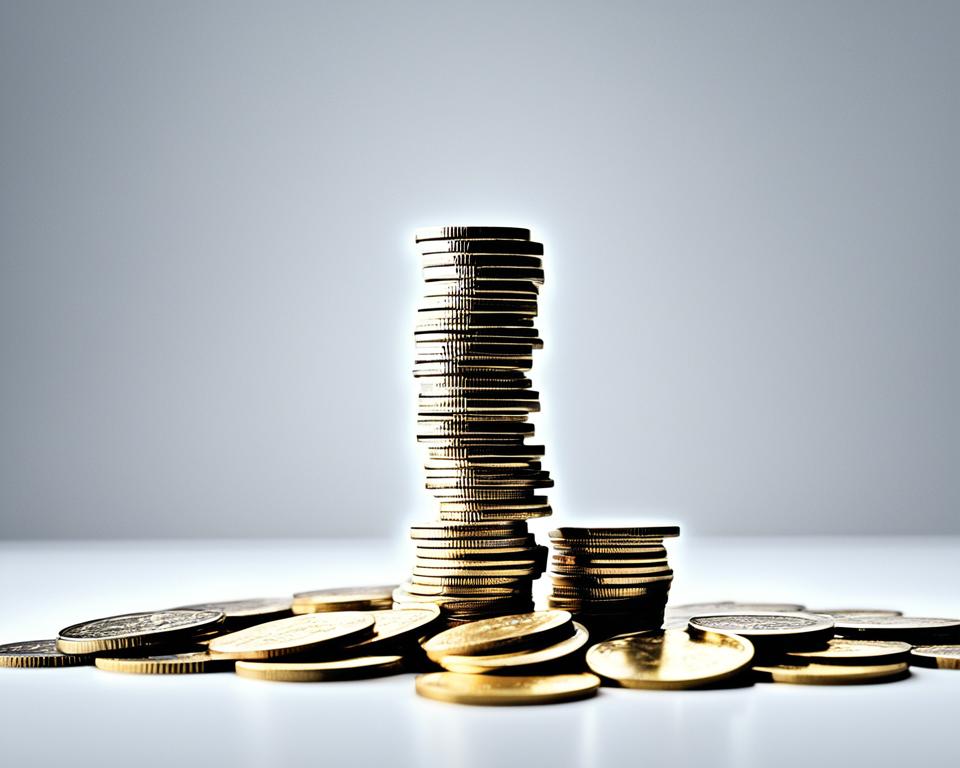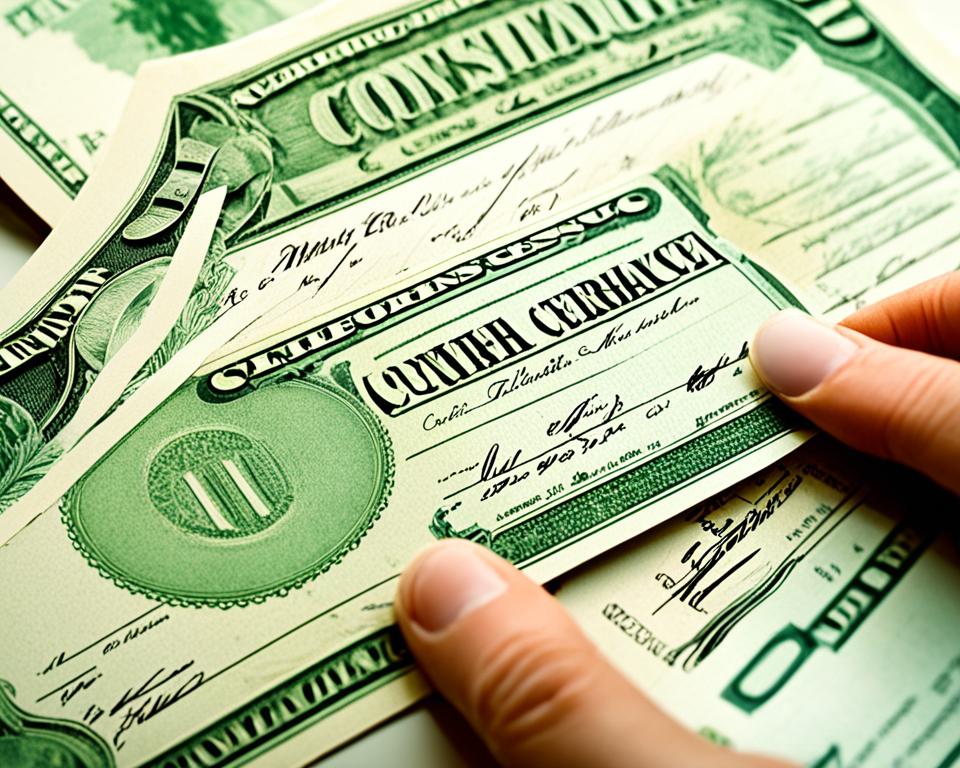Physical Address
304 North Cardinal St.
Dorchester Center, MA 02124
Physical Address
304 North Cardinal St.
Dorchester Center, MA 02124

Learn about outstanding shares, the total shares a public company has issued and are held by investors, and their impact on stock valuation and ownership.
Apple’s total outstanding shares dropped from over 21 billion in 2016 to under 17 billion in 2020. This happened because Apple bought back some of its own stock. This move greatly affected Apple’s worth and earnings for each share. Knowing about outstanding shares helps investors understand a company’s financial status and its chances for growth.
Outstanding shares are all the shares of a company’s stock that people own. This includes what the company’s insiders and big investors hold. These shares show how much of the company someone owns. But, shares the company buys back aren’t counted as outstanding. This means they don’t affect the company’s value or its earnings for each share.
The number of a company’s outstanding shares can change. New shares being sold, the company buying stock back, or splitting the stock can all make this number go up or down. Watching these changes can tell you a lot about how the company is managing its money. And, it shows what could happen to the value of your shares.
Outstanding shares are all of a company’s equity shares that have been sold. They’re held by both the public and company employees. This count includes publicly traded shares and those held by people inside the company. However, it doesn’t count any shares the company itself owns.
Knowing the number of outstanding shares helps investors understand a company. It gives clues about the company’s equity structure and its market capitalization. These details help investors decide how to manage their investments. They can choose companies of different sizes, like large-cap or small-cap, to balance their risks.
The market capitalization of a business is found by multiplying its current stock price with the total number of outstanding shares. This calculation shows the total worth of a company’s public equity shares. Changes in the number of these shares, through buying back or issuing new shares, can change a company’s market value. It can also affect important financial measures like earnings per share.
Understanding outstanding shares means knowing about a company’s total share capital. This includes restricted shares, treasury shares, and authorized shares.
Restricted shares are held by company insiders like officers and directors. They come with rules, such as not being able to trade them publicly. Even though they count in a company’s outstanding shares, they’re not up for public trade.
Treasury shares are those a company buys back from the market. Since they’re not in the market anymore, they’re not in the count for outstanding shares. Companies can later put these shares back out for trade.
Authorized shares are the most a company can legally give out. It’s stated in the company’s founding documents. This number includes all shares, whether they’re being used, held as treasury shares, or shared with the public. The company might change this number if shareholders agree.
| Type of Shares | Description | Included in Outstanding Shares |
|---|---|---|
| Restricted Shares | Shares held by company insiders and subject to trading restrictions | Yes |
| Treasury Shares | Shares repurchased by the company and not available for public trading | No |
| Authorized Shares | Maximum number of shares a company is legally allowed to issue | No (only actual issued shares are outstanding) |

Investors look in a company’s financial reports and files to find its outstanding shares. A company’s Form 10-K or 10-Q, filed with the SEC, shares this number. You can find these reports on the SEC’s EDGAR website. They will show the total outstanding shares that the company has.
Companies that trade on the stock market must report their financial info to the SEC. Investors can check a company’s annual 10-K or 10-Q filings for its outstanding shares info. This data helps in understanding a company’s market capitalization and financial health.
Investors can also find outstanding shares info on stock exchange websites or the company’s own page. These sources have details about publicly traded shares, equity shares, and free float shares. This can give a full look at a company’s capital structure.
A company may have outstanding shares but not all are for public trading. Shares open to the public market are called the stock float. If one company owns shares of another without a selling plan, it changes things.
The difference between outstanding shares and float shares shows insider and employee shares that can’t yet be sold. This can show how much company staff owns.
If there are more outstanding shares than float shares, the stock price may change a lot. Fewer shares for trade means it’s more volatile. But, if the floating shares are less than outstanding shares, it hints at higher employee ownership.
Remember, the link between outstanding shares and float shares doesn’t always mean the company will grow. It does help you understand employee ownership and stock price ups and downs.
| Metric | Value |
|---|---|
| Total Authorized Shares | 24 billion |
| Shares Outstanding | 7.5 billion |
| Floating Shares | 7 billion |
To find the market capitalization of a firm, we multiply the total shares outstanding by the share price. Companies often show their outstanding shares on their sites. They might update this number too.
When choosing where to invest, consider the percentage of floating stock. It affects how liquid and volatile a stock is. A higher float percentage usually means less dramatic stock price moves and smaller bid-ask spread.
Stock splits change the number of shares a company has. This happens when a firm swaps its current shares for either more or fewer new shares, such as in a reverse split.
In a forward stock split, a company issues more shares, bringing their value down. For instance, with a 2-for-1 split, shareholders would get two new shares for each old one. Despite this change, the company’s overall worth, known as market capitalization, stays the same. Making shares more affordable can attract a wider variety of investors.
On the flip side, a reverse stock split cuts down on shares, raising their value. This strategy is used to increase a company’s stock price, which can benefit shareholders. By reducing the number of shares out there, it might help meet a stock exchange’s price rules. It could also lower the number of total shares, which may improve share trading.

Companies often sell new shares for many reasons. For example, to get money for growing, to pay for buying other companies, or to have more money in the bank. The number of outstanding shares might change when companies sell new shares or buy back the old ones.
One reason to sell new shares is to get capital for growing the business. This helps pay for new products or making the company bigger. This way, the company doesn’t have to borrow a lot of money, which can be hard to pay back. It keeps the company financially strong and helps reach its big goals.
Sometimes, companies sell new shares when they want to buy or join another company. They use these shares as part payment. This keeps more money in the bank and might save taxes. It’s also a good option when the other company’s owners want a share in the new, bigger company.
Other times, companies sell new shares just to have more cash saved up. This extra money can help if the market gets tough or for future plans. By doing this, they don’t have to get more loans. They keep strong without more debt.
Adding new shares affects the business in big ways. It changes how many shares the company has and its market size. People who invest in the company watch these changes closely. They want to see how the company is growing and what it means for them.
When a company believes its stocks are worth more than their current price, they might start a share buyback. This means they buy back some of the stocks they sold before, usually at a better price. Doing this changes the number of shares out there and can boost the stock’s overall value.
Buying back shares can make the stock price go up. When a company has fewer shares available, people might want them more. This can cause the stock’s price to rise, which helps the company. It also makes the stock look better to new investors.
Not only can buying back shares raise the stock’s price, but it can also increase a company’s earnings per share. By using fewer shares to divide its earnings, the company makes more money per share. This could make the stock look even more valuable to investors.
Many companies use share buybacks to improve their stock’s performance. A good example is Apple, which has spent over $467 billion on buybacks since 2012. In 2021, Apple spent $85.5 billion just repurchasing its stock. The U.S. government is showing more interest in these moves too. Now, a new rule taxes large buybacks from U.S. firms by 1% if they exceed $1 million. This rule highlights how important stock buybacks are.

It’s key for investors to grasp the difference between diluted and basic outstanding shares. This helps when checking a company’s financial health and growth chances. Basic outstanding shares show the current common stock available. In contrast, diluted outstanding shares include potential shares from convertible securities or stock options.
Diluted earnings per share (EPS) are always lower than basic EPS. This is because diluted EPS includes potentially new shares from preferred shares, convertible debt, and more. Basic EPS doesn’t count these in.
For diluted EPS, you take the net income and subtract any preferred dividends. Then, you divide this by the total shares. This way, earnings show the possible effects of more shares on value.
It’s crucial to analyze both past EPS and future estimates. Looking at diluted EPS helps understand a company’s long-term stock dilution risk. It also reflects its potential for ongoing profits for stockholders.
| Metric | Description |
|---|---|
| Basic Outstanding Shares | The number of equity shares available, without treasury stock or authorized shares that haven’t been used. |
| Diluted Outstanding Shares | All possible shares, including those that may be issued from convertible securities or stock options. |
| Basic EPS | The earnings for each share, considering only the current shares without diluting effects. |
| Diluted EPS | The earnings for each share, looking at the full number of potential shares, dilutions, and effects. |
Knowing how diluted and basic shares differ is vital when making investing decisions. It helps to judge a company’s position, its growth potential, and what this means for investors.

Outstanding shares play a big role in stock market trading. They directly affect a company’s worth and what their shareholders own. The amount of outstanding shares can change based on how the company gets its money and grows.
It’s vital for investors and analysts to grasp outstanding shares’ impact. This includes how they relate to a company’s value, actions like stock splits, and buying back shares.
The total shares a company issues link closely with outstanding shares. This involve publicly traded shares and others too. Factors like stock dilution and certain types of shares also matter.
Knowing about a company’s outstanding shares helps understand its finances. It also shows its market position, growth chances, and possible decreases in value. By keeping up with these details, investors can make smarter choices. They can also better judge the opportunities offered by public companies.